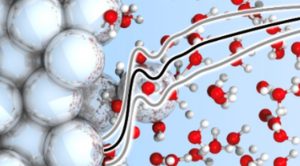 Electrochemistry is an interdisciplinary field that bridges chemistry, materials science, biomolecular science, and mathematics to explore the atomic-scale interplay between electrical and chemical processes. Serving as a fundamental enabler, electrochemistry facilitates a diverse range of critical technologies, including energy storage systems, fuel cells, electrolyzers, and eco-friendly chemical synthesis. Its pivotal role in addressing pressing global challenges related to renewable energy integration, carbon reduction, and resource efficiency highlights its significance in advancing sustainable technologies. As a key driver of innovation, electrochemistry is an increasingly crucial and indispensable foundation for the development and implementation of green-technology solutions to broad classes of industrial domains. Indeed, electrochemical reactions and interfaces are integral to understanding the intricate biochemical processes that govern life. They provide tools for investigating molecular interactions, diagnosing diseases, and developing innovative technologies, and are crucial to advance our understanding of biology at the nanoscale.
Electrochemistry is an interdisciplinary field that bridges chemistry, materials science, biomolecular science, and mathematics to explore the atomic-scale interplay between electrical and chemical processes. Serving as a fundamental enabler, electrochemistry facilitates a diverse range of critical technologies, including energy storage systems, fuel cells, electrolyzers, and eco-friendly chemical synthesis. Its pivotal role in addressing pressing global challenges related to renewable energy integration, carbon reduction, and resource efficiency highlights its significance in advancing sustainable technologies. As a key driver of innovation, electrochemistry is an increasingly crucial and indispensable foundation for the development and implementation of green-technology solutions to broad classes of industrial domains. Indeed, electrochemical reactions and interfaces are integral to understanding the intricate biochemical processes that govern life. They provide tools for investigating molecular interactions, diagnosing diseases, and developing innovative technologies, and are crucial to advance our understanding of biology at the nanoscale.
Recent experimental and simulation breakthroughs demonstrate the presence of significant statistical fluctuations in electric fields at electrochemical interfaces. These fluctuations impact molecular orderings, particularly at confining interfaces, and challenge the existing mathematical and physical models that have long provided the fundamental underpinning of macroscopic approximations. Advancement in electrochemistry requires a transition from macroscopic models based upon deterministic continuum formulations to stochastically-informed mathematical descriptions based upon interaction kernels for molecular ordering and structure formation.
This program will address these pressing challenges and seize the opportunity to enhance electrochemical methods essential to a sustainable economy. It seeks to bridge the gap between deterministic and stochastic modeling in electrochemistry by facilitating collaboration among applied mathematicians, electrochemists, and computational scientists. By fostering discussions and knowledge exchange, the program aims to unlock the potential of a stochastic approach to interaction kernel learning, leading to more accurate and realistic electrochemical simulations.
Juergen Fuhrmann
(Weierstraß-Institut für Angewandte Analysis und Stochastik (WIAS))
Richard Hennig
(University of Florida)
Mauro Maggioni
(John Hopkins University)
Jörg Neugebauer
(Max-Planck-Institut für Eisenforschung)
Keith Promislow
(Michigan State University)
Katsuyo Thornton
(University of Michigan)
Bilge Yildiz
(Massachusetts Institute of Technology)